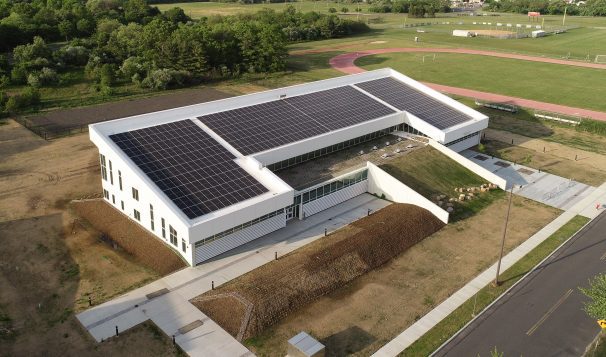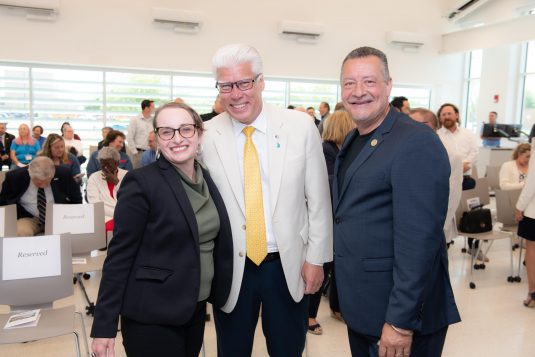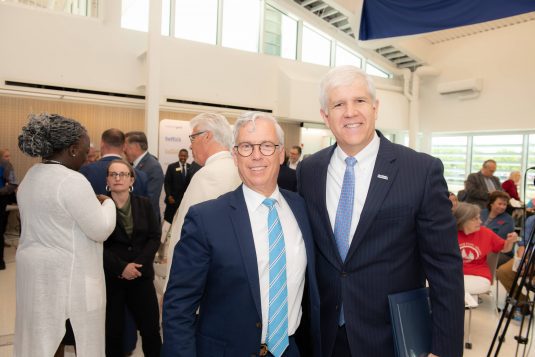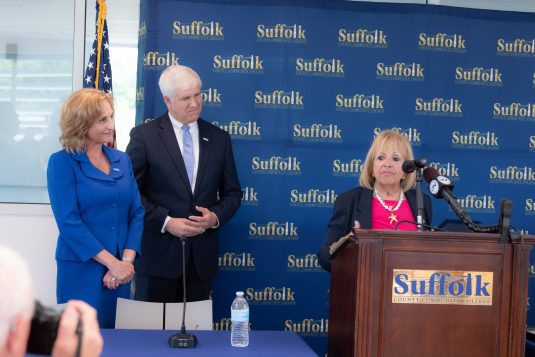By Samantha Rutt
Wading River Civic Association convened on May 23 to discuss a significant new development — a proposed battery energy storage system facility, known as BESS, on LIPA-owned property in Shoreham. The meeting, held at Wading River Congregational Church, drew a considerable crowd interested in learning about the project’s specifics and its implications for the community.
After concluding the business portion of the meeting, addressing new membership, voting rules and general notices, the civic’s focus shifted to the proposal from the Albany-based company, Key Capture Energy.
Key Capture Energy is an independent power producer of utility-scale battery storage system projects. “Currently, in New York State, KCE operates three battery energy storage facilities — including the largest operational facility,” said Phil Denara, director of development at KCE.
The company’s proposal is not the first Long Island has seen, as other companies with similar objectives have visited neighboring civic organizations and presented their systems. Indeed, KCE has plans for facilities at Babylon and Cutchogue.
The increase in proposed battery energy storage facilities coincides with the Climate Leadership Protection Act, signed into law in 2019, essentially mandating greenhouse gas emissions to 40% by 2030 and no less than 85% by 2050 from 1990 levels. It also mandates 100% of electricity used in New York state must come from clean energy sources by 2040 with 70% renewable energy by 2030.
Project genesis and site selection
The discussion began with an explanation of the project’s origins and site selection process. The project was initiated to meet statewide goals for energy storage as Long Island transitions from fossil fuels to renewable energy sources. With a local demand for approximately 5,000 megawatts of electricity, integrating storage systems with renewable energy such as offshore wind and solar is crucial.
“Here on Long Island we currently have a demand for electricity to the tune of 5,000 megawatts and so as we transition away from fossil fuels and toward renewables, we have to keep that number in mind,” Denara said.
As explained by Denara at the meeting, in 2021 Long Island Power Authority issued a competitive solicitation for bulk energy storage projects, seeking at least 175 MW of capacity. Developers bid on various sites, including those offered by LIPA, which were strategically located next to existing infrastructure to reduce the need for new development. This site was awarded in August 2022 and is now moving from preliminary design to execution.
Project scope and capacity
The BESS project at Shoreham is slated to have a capacity of 50 MW, enough to power tens of thousands of homes.
While this represents only 1% of Long Island’s total power demand, it plays a critical role in the broader transition to renewable energy. Currently, there are only two full-scale BESS facilities on Long Island, both with a capacity of 5 MW each, located in East Hampton and Montauk. The East Hampton facility has been out of commission since a fire on May 31, 2023.
Site details and development stages
The Shoreham site is situated on approximately 2.3 acres of land near the former Long Island Lighting Company property. Development has involved boundary surveys, geotechnical studies and comprehensive environmental reviews.
For completion, the project must navigate three main development components: land-use acquisition and permitting, grid interconnection and commercial power delivery contracts. The site benefits from exemptions from the Town of Brookhaven’s zoning requirements, although the developers are adhering to these standards voluntarily. Local officials, including the Town Board and emergency services, have been engaged throughout the process to ensure transparency and community safety.
Technology and safety considerations
BESS will employ advanced lithium-ion battery technology. A significant point of discussion was the safety of these systems. Lithium-ion batteries are chosen for their high efficiency, with a round-trip efficiency of about 90%, essential for storing and dispatching renewable energy.
Paul Rogers of the Energy Safety Response Group — comprising retired firefighters, service people, engineers and first responders responsible for handling codes, standards and safety protocols — detailed the safety measures in place. These include multilayered safety listings and comprehensive monitoring systems to prevent overcharging and overheating. The system’s design ensures that in the unlikely event of a failure, the issue remains contained within an individual unit, preventing any propagation.
Community concerns and future technologies
Civic members raised questions about the long-term viability and environmental impact of lithium-ion batteries. Some suggested exploring alternative technologies such as sodium-ion batteries. While the current focus is on lithium-ion due to its proven efficiency and safety, the developers remained open to integrating future advancements.
The project is designed for a 20-year operational life, with plans for recycling and repurposing battery components at the end of their lifecycle. This contributes to a circular supply chain, reducing reliance on international resources and enhancing energy independence.
The Shoreham BESS facility is set to become a critical component of the local energy infrastructure, promising enhanced reliability and sustainability for the community.
The civic association plans to continue these discussions in future meetings, ensuring ongoing community engagement and transparency as the project progresses. The next civic meeting will be held on June 27 at 7:30 p.m. at the Wading River Congregational Church.






















































